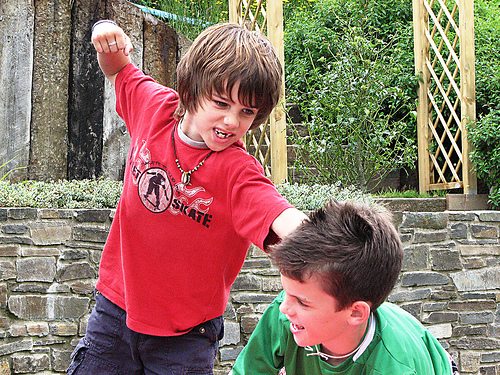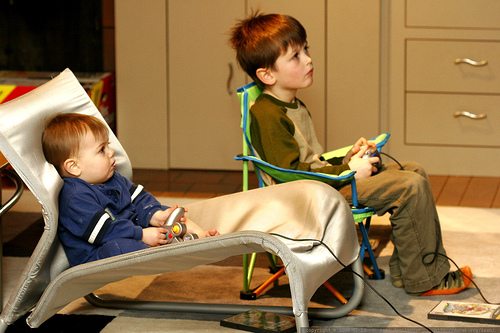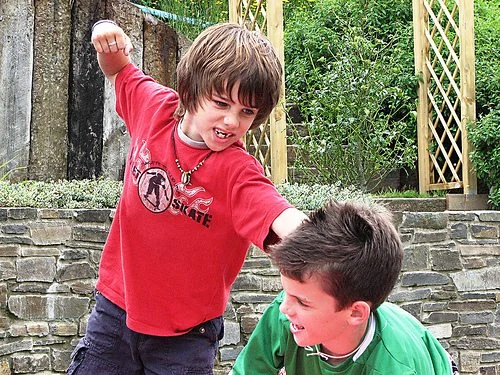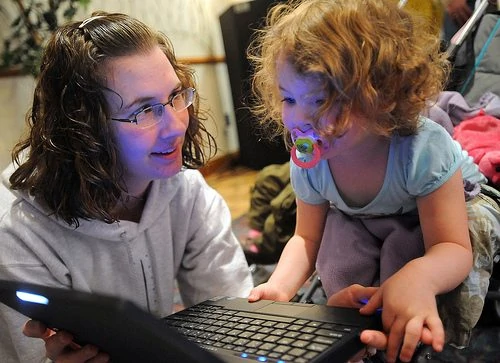What’s going on with our boys?

The causes are many – something we address in our Boys and Coyotes course – and discussed frequently by professionals, but one that comes up time and again are video games.
This fall, I’ve been making a point when I teach Yoga Calm in public school classrooms to ask children directly about their video game play. What I’ve heard has been sometimes alarming, such as second and third grade boys expressing their love of graphically violent games like Call of Duty.
Not familiar with the game? Neither was I. So I looked it up:
The cavalier nature of this trailer – regular-looking teenage boys blowing up things to the fun and lively music of Frank Sinatra – is disconcerting, even disturbing. What kind of message does a 7 or 8 year old take away from something like this?
One thing they think is that the violence doesn’t matter if they’re killing monsters – the gist of another Call of Duty spin-off. “It’s not a big deal, Mrs. Gillen,” they say. “We’re just fighting zombies!” But these aren’t the vintage, B-movie zombies you might remember from your own childhood:
I recently showed these trailers to a group of adults, and a few of the teachers turned their heads, unable to watch, it was so disturbing. I asked them to notice how their bodies felt after watching. “Disgusted,” they reported, “like I want to throw up.”
And that was after only two minutes, I said. Imagine how young minds and hearts must feel after a half hour of this.
“Or two hours!” one teacher remarked. “Some of my students are playing these games for two hours a day.”
Another said, “No wonder these boys have trouble sitting in the classroom.”

And that’s part of why the American Academy of Pediatrics is ringing the bell about media consumption and addiction. They recently issued new media guidelines for kids – and they couldn’t be any more straightforward:
- Children should be limited to less than two hours a day of entertainment-based screen time – unless they’re younger than two. In that case, they should have no screen time at all.
- Kids should not have TV or Internet access in their bedrooms.
- Parents should watch TV and movies with their children and monitor Internet usage.
Of course, parents are up against some powerful forces themselves – namely, the manufacturers, marketers, retailers and the like who put plenty of money and muscle into making sure consumers stay hooked.
As psychologist and media expert Dr. Doreen Dodgen-Magee suggests in a recent post on her plugged in blog, stirring up excitement over each new game release – and creating bigger profit bonanzas each time – is just the beginning. While sales figures may be “staggering,” she says, they do
nothing to address the number of hours which will be spent attempting to master the game in these first few days of release. in addition, games such as this are immersive and stick with players. long after they leave the screen, the game is still occupying important regions of players’ internal dialogue and thought. those who attempt to be counter cultural or who cannot afford to give in to the frenzy will spend plenty of emotional capital consoling themselves (understandably…the social pressures are great).
Indeed, investment in the present media and digital universe is more than monetary. We pay with ongoing emotional investment in the games, movies, shows, music and such, not to mention the growing sense that our gadgets are extensions of ourselves. Take away someone’s iPhone and it’s like you’ve taken away a part of their Self.
If it can be like that for us as adults, how much more so for children?
Yet it’s important to be clear that the problem isn’t necessarily with screens or even the media itself (though as above, plenty of content is certainly problematic). As Dr. David Walsh notes in his excellent book Smart Parenting, Smarter Kids,
The proliferation of electronic screens and digital technologies in our kids’ lives, including video games, TV, cell phones, and the Internet, present both opportunity as well as risk for our kids. [Some find] ways to maximize the benefits of these digital technologies (no doubt receiving a fair amount of guidance and help from adults in their lives), while [for others’] twenty-four seven digital connectivity was creating anxiety, obsessive behavior, and lots of conflict. All these kids are good kids, with parents who care about them. But raising kids in the digital age sometimes feels like navigating without a map, in a landscape filled with both treasure, and trash. [emphasis added]
The answer, however, is not to go screenless – something that may well be impossible by this stage of the current technological revolution. The key, rather, is to be both knowledgeable and mindful about how we use them (we’re role models, whether we like it or not) and how we raise our kids to use them. Rules and limits lovingly provided help children learn how to use media and technology responsibly.
For just as we want them to be tech-savvy, we also want them to be socially- and emotionally-savvy, as well, developing positive, healthy, real world, face-to-face relationships with family, friends, colleagues and all other humans with lives their own lives intersect. (This is something we’ve blogged about before – for instance, here and here and here.)
At this time of year, as new tech toys and media enter your children’s lives in the form of holiday gifts, there’s a perfect opportunity to create family guidelines you can all agree to (if you’ve not already done so). Some tips to get you started:
- To My 13 Year Old, an iPhone Contract from Your Mom, with Love
- Healthy Habits for TV, Video Games & the Internet
- 10 Tips for Parenting in an Online World
Fight image by Aislinn Ritchie,
gaming image by sean dreilinger, via Flickr




